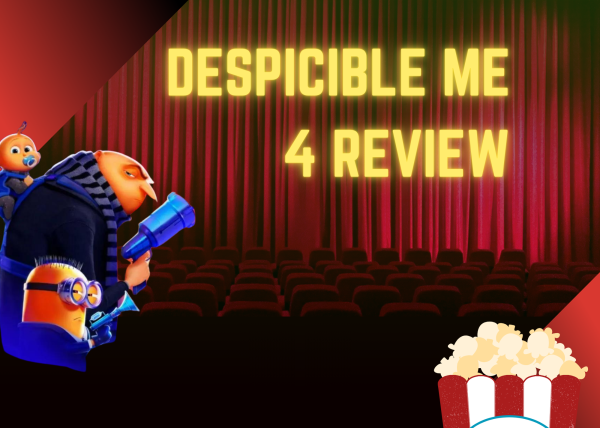Movie Review: Avatar: The Way of Water
Avatar: The Way of Water opened Dec. 16.
Back in 2009, Avatar arrived on screens as an extraordinary and innovative vision of what the future of the cinematic world would look like. Thirteen years later, Avatar: The Way of Water– the first of several long-awaited sequels directed by James Cameron – comes back to the big screen bringing with it a ripple of nostalgia.
From the moment you sit in the theater, James Cameron submerges you in a world full of stunning imagery and enthralling storytelling. He wants you to believe that aliens are killing machines, humanity can pass their memories to the body of a big blue creature and transports you to a world in which a significant disaster has happened. In a way, the planet of Pandora was conceived as a giant playground to show the advanced technology he wanted to bring to the theaters, becoming the most ambitious manner to display the power of cinema.
Avatar: The Way of Water starts its story in a skeptical way by throwing you into the world of Pandora with a confusing narrative. Therefore, world-building becomes James Cameron’s top priority, as he engulfs you in the forest with the Na’vi people once again. As this happens, we catch up with the lives of our main characters, Jake Sully and Neytiri, who have been living in bliss with their four children.
Unfortunately, this period of contentment is short-lived, as the sky-people return to the world of Pandora once again. With them comes an avatar version of Colonel Miles Quaritch, who has come to finish what he started and finally achieve vengeance on Jake for the death of his human form.
In Avatar: The Way of Water the ambitious and destructive military human race is once again the villains of the story; however, their motives might be a bit hazy throughout the film. As the film progresses, it is never entirely clear why Quaritch is so adamant about hunting Jake and his family for any other reason than the plot needs it.
Do you run and hide from evil or fight back to said oppressors? This is the question that is subliminally asked at the beginning of the film when the danger is introduced. At first, Jake takes the latter by moving the Na’vi people to a different area in Pandora; however, this strategy fails, and he seems forced to move his family.
Over the last three decades, James Cameron has been obsessed with water, which is why this film might be right up his alley. After the Sully’s are begrudgingly forced to leave their home in the forest, they start their journey towards a new clan, the Metkayina people. Tonowari, leader of the reef people, worries about the danger of letting the Sully’s stay with his clan; however, he couldn’t bring himself to turn them away.
The constant moral question about responsibility when it comes to danger is revisited throughout the film as Cameron dives into the depths of the alien ocean, introducing a group of commercial poachers that come from Earth and have plucked up the courage to hunt sacred water creatures. As all this happens, mesmerizing sequences of the underwater world are shown in which as an audience member you might want to remind yourself that none of what you’re watching is real.
The focus of the film switches to the Sully kids as they adapt and learn the ways of the reef clan. Unlike the first movie, the world of Avatar expands and focuses on more than one single story. While the tiny plots that are built are mostly table-setting for future projects, it creates a larger canvas for the storytelling elements.
The cultural impact of Avatar has been the center of many conversations between critics for a very long time. As superheroes took over the screen and big franchises like Marvel grew, the people allowed themselves to forget the Na’vi for the last thirteen years. However, that does not change the fact that Avatar became a staple of the modern generation of filmmaking, with the creation of innovative technology that allowed James Cameron to properly execute his vision, he was able to bring his audience members into a world they had never known before.
His ambitions keep constantly changing the course of modern cinematography and challenging other big and ambitious directors to create more, to celebrate nature by means of the most extravagant artifice, and to make everything new feel old again.

Ashley Torres is a senior and this is her third year in journalism. She is the Editor-in-chief. In addition to being part of The Blackman Voice, she runs...











